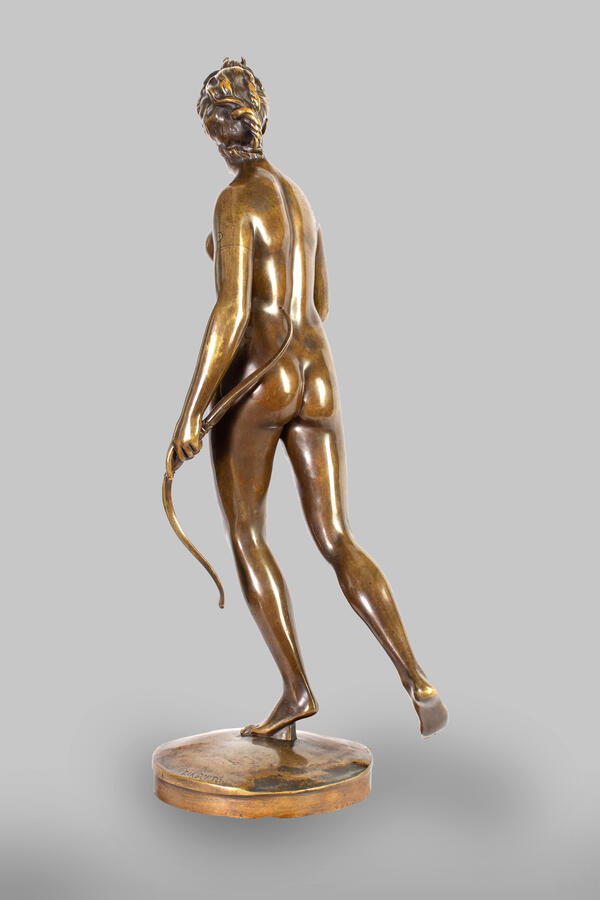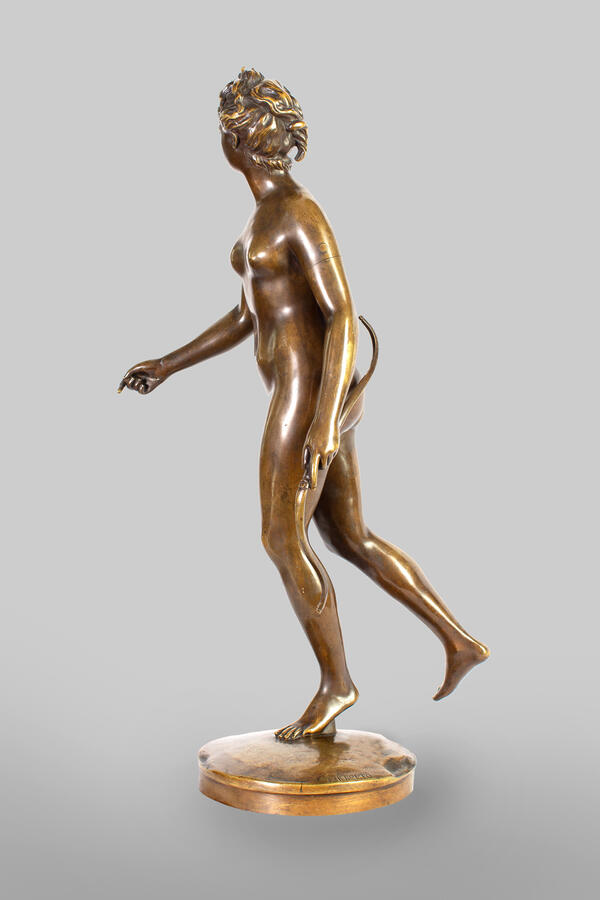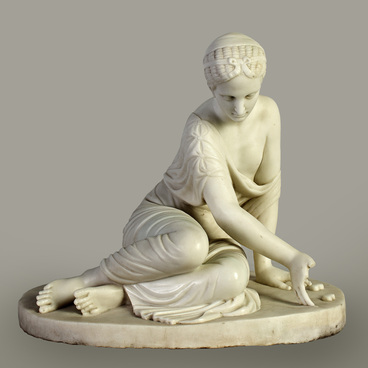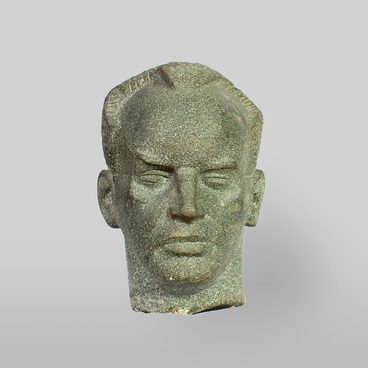French sculptors are mostly represented in the collection of the Tambov Art Gallery through figurines. The piece called “Diana” was created by an unknown sculptor in the 1890s.
The sculpture initially entered the gallery as a copy of the work of Clodion. However, in 1990, the Tambov art critic Yekaterina Ivanovna Salyakhova provided conclusive proof that the sculpture “Diana” is actually a smaller-sized copy of the famous statue, created by Jean-Antoine Houdon in 1777.
Jean-Antoine Houdon (1741–1828) was a French sculptor and master of bringing psychological insight into portraits. He was one of the most famous creators of his time. His works are found in the collections of the largest museums around the world: the Louvre, the Hermitage, and others. Houdon was a contemporary of the French sculptor Claude Michel (1738–1814), nicknamed Clodion. While the latter’s works usually show traces of the Rococo influence, the statue “Diana” bears the signs of classicism — a style that was typical of Houdon’s works. At one point, the original by Houdon called “Diana the Huntress” raised numerous disputes as to whether it was appropriate to show female nudity. The work is considered one of the most famous sculptures of the 18th century.
The presented sculpture shows the goddess Diana, running naked with her head turned to the left. Presumably, there used to be an arrow in her right hand, as there is a small recession on the palm. In her left hand, she holds a bow. Diana is the Roman goddess of forests, wild animals, and the hunt. In ancient times, Diana was equated with the goddess Artemis. Diana’s nudity presents an impressive combination of grace, femininity, and inner strength, which suits the goddess of plants, animals, hunting, and fertility.
It is known for certain that the sculpture from the collection of the Tambov Art Gallery was cast by Carl Bertheau. This is evidenced by the signature on the base that reads “Cast. C.Bertheau”. In the 1880s, Felix Chopin’s large bronze foundry in Russia was going through a crisis. To save his factory from shutting down, Chopin decided to retire and invited the famous sculptor Carl Bertheau, who worked alongside the legendary master Ferdinand Barbedienne for 11 years. Bertheau increased the amount of exported indoor sculpture, cast after models by Lanceray and other sculptors, and continued to work on commission, producing both small and large pieces for the government. Bertheau kept participating in major exhibitions and even received two gold medals and the title of “Supplier to the Court of His Imperial Majesty” at the end of the 19th century.
The sculpture initially entered the gallery as a copy of the work of Clodion. However, in 1990, the Tambov art critic Yekaterina Ivanovna Salyakhova provided conclusive proof that the sculpture “Diana” is actually a smaller-sized copy of the famous statue, created by Jean-Antoine Houdon in 1777.
Jean-Antoine Houdon (1741–1828) was a French sculptor and master of bringing psychological insight into portraits. He was one of the most famous creators of his time. His works are found in the collections of the largest museums around the world: the Louvre, the Hermitage, and others. Houdon was a contemporary of the French sculptor Claude Michel (1738–1814), nicknamed Clodion. While the latter’s works usually show traces of the Rococo influence, the statue “Diana” bears the signs of classicism — a style that was typical of Houdon’s works. At one point, the original by Houdon called “Diana the Huntress” raised numerous disputes as to whether it was appropriate to show female nudity. The work is considered one of the most famous sculptures of the 18th century.
The presented sculpture shows the goddess Diana, running naked with her head turned to the left. Presumably, there used to be an arrow in her right hand, as there is a small recession on the palm. In her left hand, she holds a bow. Diana is the Roman goddess of forests, wild animals, and the hunt. In ancient times, Diana was equated with the goddess Artemis. Diana’s nudity presents an impressive combination of grace, femininity, and inner strength, which suits the goddess of plants, animals, hunting, and fertility.
It is known for certain that the sculpture from the collection of the Tambov Art Gallery was cast by Carl Bertheau. This is evidenced by the signature on the base that reads “Cast. C.Bertheau”. In the 1880s, Felix Chopin’s large bronze foundry in Russia was going through a crisis. To save his factory from shutting down, Chopin decided to retire and invited the famous sculptor Carl Bertheau, who worked alongside the legendary master Ferdinand Barbedienne for 11 years. Bertheau increased the amount of exported indoor sculpture, cast after models by Lanceray and other sculptors, and continued to work on commission, producing both small and large pieces for the government. Bertheau kept participating in major exhibitions and even received two gold medals and the title of “Supplier to the Court of His Imperial Majesty” at the end of the 19th century.






